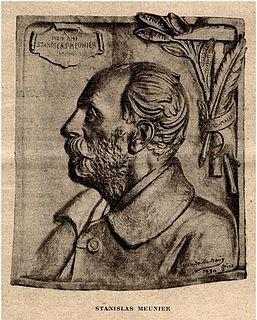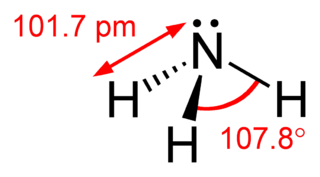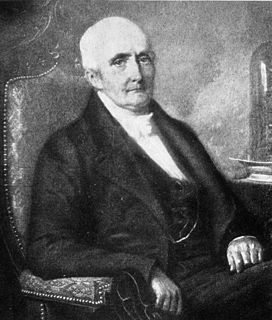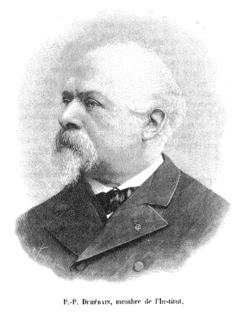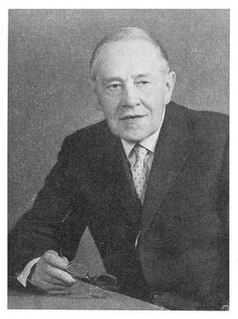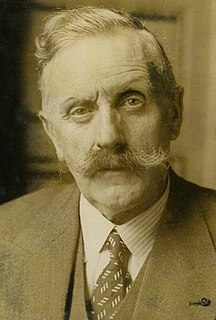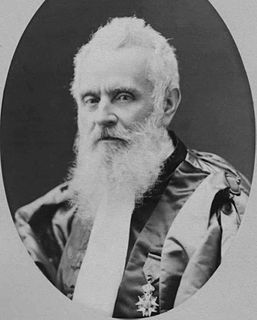
Georges Ville (23 March 1824 – 22 February 1897) was a French agronomist and plant physiologist born in Pont-Saint-Esprit.

Pont-Saint-Esprit is a commune in the Gard département in southern France. It is situated on the Rhône River and is the site of a historical crossing, hence its name. The Ardèche River flows into the Rhône, just to the north of the bridge. The residents are called Spiripontains.
In 1843 he started his career as an interne in pharmacy. From 1857 to 1897 he held the chair of Physique végétale at the Muséum national d'histoire naturelle in Paris.

Pharmacy is the science and technique of preparing, dispensing, and review of drugs and providing additional clinical services. It is a health profession that links health sciences with pharmaceutical sciences and aims to ensure the safe, effective, and affordable use of drugs. The professional practice is becoming more clinically oriented as most of the drugs are now manufactured by pharmaceutical industries. Based on the setting, the pharmacy is classified as a community or institutional pharmacy. Providing direct patient care in the community of institutional pharmacies are considered clinical pharmacy.

Paris is the capital and most populous city of France, with an area of 105 square kilometres and an official estimated population of 2,140,526 residents as of 1 January 2019. Since the 17th century, Paris is one of Europe's major centres of finance, diplomacy, commerce, fashion, science, and the arts.
He is known for his research involving the absorption of nitrogen by plants. In 1849-1852 he carried out experiments on nitrogen absorption from the air by plants that reasserted 18th century theories espoused by Joseph Priestley and Jan Ingenhousz, stating that plants were capable of absorbing free nitrogen, a claim that was later opposed by Nicolas-Théodore de Saussure in 1804 and backed up by the experiments of Jean Senebier (1742-1809). The subject garnered enough interest in the scientific community that the French Academy of Sciences formed a committee to investigate Ville's work, resulting in a confirmation of his experiments on the matter. [1] [2]

Nitrogen is a chemical element with symbol N and atomic number 7. It was first discovered and isolated by Scottish physician Daniel Rutherford in 1772. Although Carl Wilhelm Scheele and Henry Cavendish had independently done so at about the same time, Rutherford is generally accorded the credit because his work was published first. The name nitrogène was suggested by French chemist Jean-Antoine-Claude Chaptal in 1790, when it was found that nitrogen was present in nitric acid and nitrates. Antoine Lavoisier suggested instead the name azote, from the Greek ἀζωτικός "no life", as it is an asphyxiant gas; this name is instead used in many languages, such as French, Russian, Romanian and Turkish, and appears in the English names of some nitrogen compounds such as hydrazine, azides and azo compounds.

Joseph Priestley was an 18th-century English Separatist theologian, natural philosopher, chemist, innovative grammarian, multi-subject educator, and liberal political theorist who published over 150 works. He has historically been credited with the discovery of oxygen, having isolated it in its gaseous state, although Carl Wilhelm Scheele and Antoine Lavoisier also have strong claims to the discovery.

Jan Ingenhousz or Ingen-Housz FRS was a Dutch physiologist, biologist and chemist.
He performed extensive pioneer studies on chemical fertilizers, largely carried out on his "experimental farm" (Ferme Georges-Ville) that was founded in 1860 at Vincennes. [3]
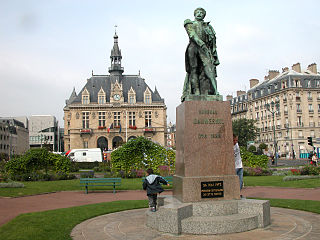
Vincennes is a commune in the Val-de-Marne department in the eastern suburbs of Paris, France. It is located 6.7 km (4.2 mi) from the centre of Paris. It is one of the most densely populated municipalities in Europe.
